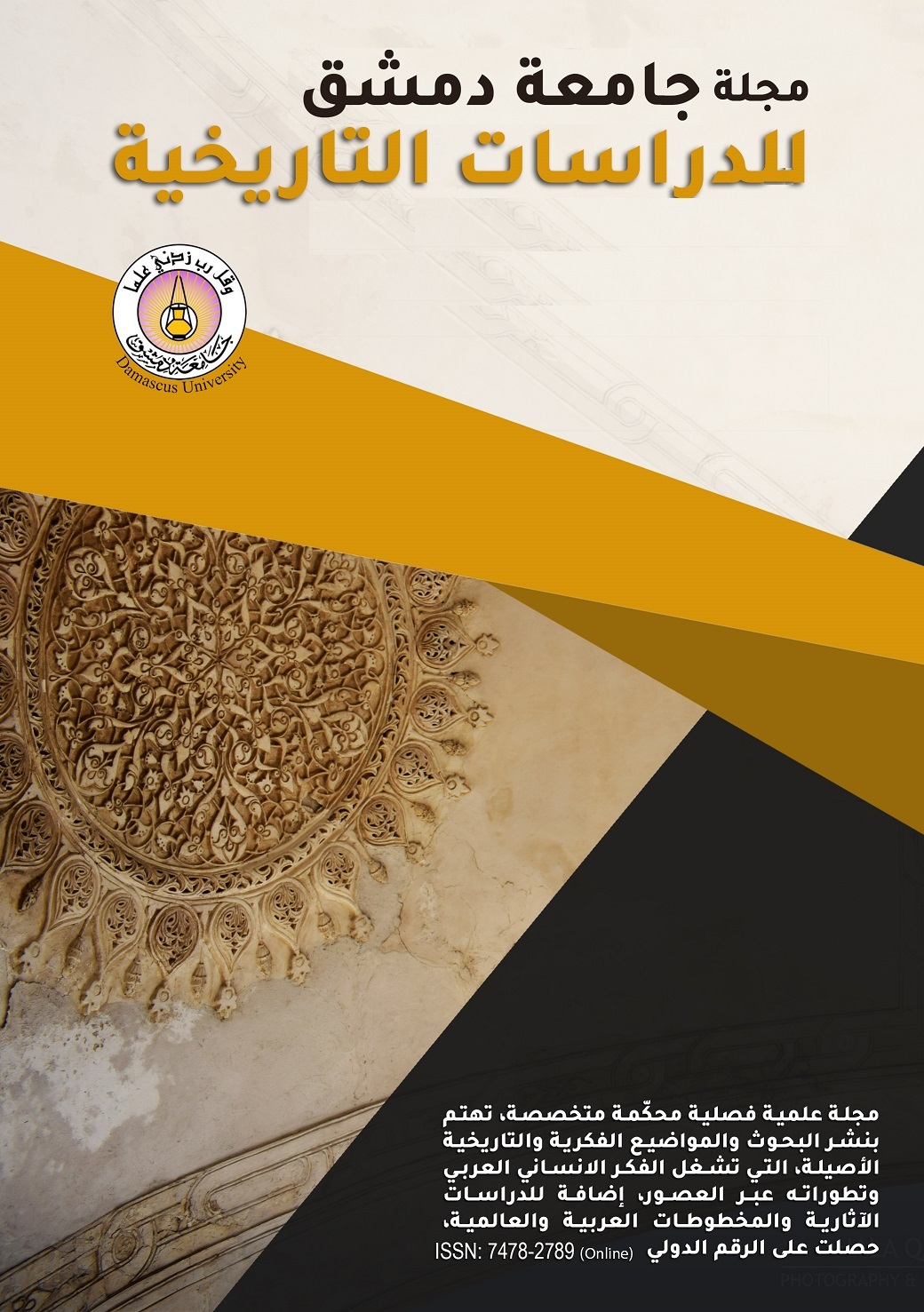سمات الخزف المحزوز في بعض القلاع الصليبية في الساحل الشامي خلال العصر المملوكي
الكلمات المفتاحية:
الخزف المحزوز، سغرافياتو، المرقب، صلاح الدينالملخص
اهتم البحث بدراسة إحدى أهم تقنيات تصنيع الخزف خلال العصور الإسلامية، وهي تقنية صناعة أواني الخزف المحزوز (السغرافياتو)، والتي نُفذت على نوعين من الصحون إن جاز التعبير، ألا وهما السلطانيات والزبادي ذواتا المقاييس المختلفة، من أجل التعرف على نوعية العجينة المُستخدمة في تصنيعهما، وكيفية شيهما في الأفران ونمط الزخارف النباتية والهندسية المطبقة على سطحهما، وتلوين هذه الزخارف بالأكاسيد اللونية المتنوعة.
واعتمد البحث على الدراسة الوصفية والتحليلية للأواني المحزوزة العائدة إلى العصر المملوكي والمكتشفة في القلاع الصليبية للساحل الشامي، والتركيز على أواني قلعتي المرقب وصلاح الدين نموذجاَ للدراسة، ومقارنة الأواني المدروسة مع بعضها، لتحديد السمات المشتركة لهذه التقنية ومعرفة نقاط الاختلاف فيما بينها.

